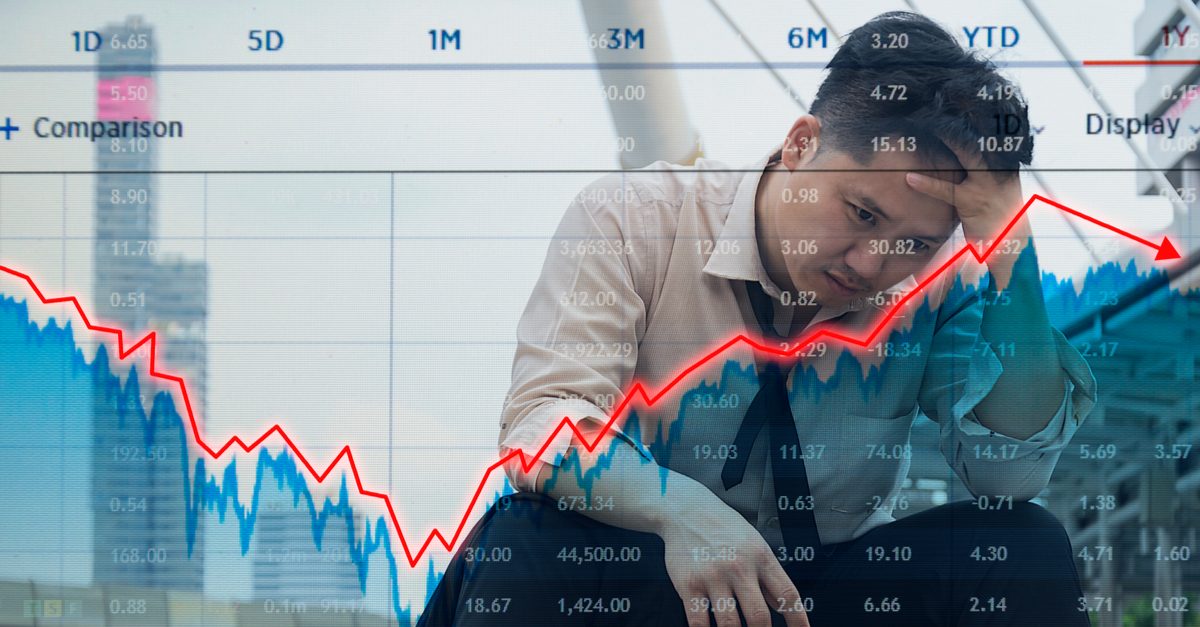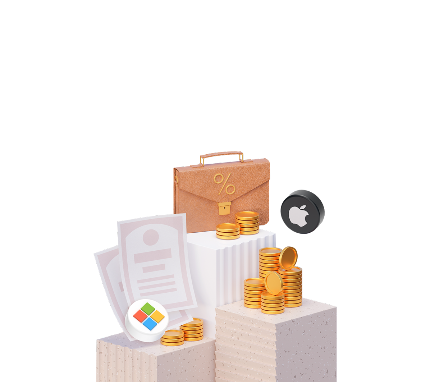Drawdown: What is It and How to Escape It?

11 minutes for reading
Such sonorous terms as Margin Call and Stop Out must be known to anyone who deals with trading. Each person has come to know it in their way: some got acquainted with them practically, forcefully closing their losing positions, some - theoretically, studying the basics of trading.
If you have not heard these terms yet, a short lecture will, perhaps, make you think well about the consequences of unreasonable and excessively emotional trading.

Margin Call is a notification from your broker, in which they require to additionally replenish your security deposit.
If after a Margin call the trader does not deposit heir account, and the losses keep growing, then after the price reaches a certain level, the Stop Out procedure will be launched. This means the broker will close some or all open positions on the account. However, Margin Call and Stop Out are not as disastrous as the trader's actions that lead to them.
One such action might be connected to unthoughtful trading operations based on no strategy or tactics, without risk and money management. An example of such actions can be trading the whole capital both in periods of high volatility and a calm market. In such times, the trader is more of a gambler, hoping for a quick gain.
However, in most cases, a loss of the deposit is caused by an extended drawdown and irrational attempts to escape it. Primary drawdowns, in their turn, are caused by deviations from the trading strategy (if there is one) and increases in trading volumes.
What is a drawdown?

A drawdown is a decrease in the balance and equity on the trading account; to put it simpler, a drawdown is a loss. Drawdowns can be of two types: floating and fixed.
Floating and fixed drawdown
Floating drawdown is an aggregate loss of all open positions. Here, we highlight that the trades we are talking about are still open.
For example, the trader opened a position, and then the market situation started developing counter the forecasts, so the trade yielded a loss. This loss will constitute the floating drawdown.
Also, such a drawdown is called floating or temporary because a day or two later the situation might change either for better or for worse.
However, as soon as the trade is closed, the drawdown turns from a floating to a fixed one.
A fixed drawdown, in its turn, may be of the following types:
- absolute
- maximal
- relative
Absolute drawdown
Absolute drawdown is the biggest loss compared to the initial sum on the trading account. To calculate the absolute drawdown, we need to deduct the minimal value reached by the yield curve from the initial sum on the deposit.
Example 1
The initial sum is $10,000. During the time of trading, the sum has never been less than $7,000.So, we deduct $7,000 from $10,000, getting $3,000.
This value will be considered the current absolute drawdown. Why do we call it current? The thing is that the sum on the account might decline below $7,000, and the absolute drawdown will change. On the whole, this value is not quite informative neither for the trader nor for the investor analyzing the statistics of the manager.
Maximal drawdown
Maximal drawdown is an indicator calculated as the difference between the current maximum and minimum of the deposit. It should be noted that for the calculation we take not the minimal value of the deposit in its history but the minimal value that the deposit reached upon reaching the maximum.
Example 2
The initial dep[osit was $10,000. Then it slumped to $8,000 after a series of unlucky trades; then it grew to $15,000, and then declined to $13,000.
In this case, the maximal sum on the deposit was $15,000 and the minimum value after the maximal one was $13,000. So the maximal drawdown will be the difference between $15,000 and $13,000, or $2,000.
Relative drawdown
Relative drawdown is calculated as the previous index but in percent, not in the currency.
Reasons for drawdowns

I will keep repeating that bad trading can be explained by the wrong choice of a strategy and a lack of risk management and money management. However, even if the trader has all these elements of trading, they might be betrayed by their psychology and/or personal discipline.
The mistakes will be revealed by increases in the trading volume, unreasonable and chaotic buying and selling, locking and using the Martingale. Of course, all this might work, but it will not be systematic.
If you have drawdowns too often, you should think something like: "Am I trading the right way?". I mean, you can plan your profit and losses if your trading system is in harmony with the market and your money management helps you escape drawdowns quickly and accumulate profit.
If your trading account does get in a drawdown, first and foremost, you have to accept it. Any trader has got a drawdown sometime, and its presence on the account is virtually normal, the question is in its size.
An experienced trader will never let a drawdown become too deep. Conversely, a beginner can easily lose 40% or even 70% of the deposit, sticking to losing trades and adding new ones. If you disagree with the axiom that a drawdown is normal and start proving the contrary to the market, you can simply worsen the problem and lose your whole capital in the end.
To a beginner trader, I would recommend deciding what sum of a drawdown is normal to them and what is not. This decision will be, no doubts, subjective. For some people, a loss will be normal if it does not exceed 10%, while others can easily cope with a loss of 50%.
I would single out the following levels:
- Up to 15% - a normal drawdown.
- 16% - 30% - no panicking yet, but time has come to decrease risks and the intensity of trading. The market situation and dynamics, as well as the state of your trading instrument, are to be revised.
- 31% - 60% - the end is nearing. If the drawdown is over 30%, you should stop trading and make a pause, then come back with your revised strategy.
I should remind you that these numbers are here for the sake of clearness only. They might change in accordance with the trader's temper and their trading style. However, to my mind, a loss of 50% of the deposit and more is unacceptable.
When the "comfortable" level of the drawdown is decided, it is time to analyze your trading. In this, an account statement or your trader's diary (if you keep track of all trades) may be of good help. Having analyzed the trading, we will figure out whether the series of losing trades was consistent with your strategy or not, whether it was systematic or not, whether you have exceeded your risk and volume limits.
Based on my own and other people's experience, I might say that 8 out of 10 losing trades can be explained by a lack (or violation) of a trading strategy and/or the methods of money management, as well as by exceeding risk limits.
How to escape a drawdown?

So, we are now nearing the part which is the reason for you to have started reading this. Again, a drawdown of an account is a natural situation you will hardly avoid. However, it can always be optimized, and its influence on the account - minimized. All this is rather easy to do: you need to follow the rules of money and risk management and your strategy. For most people, my words will seem banal. This is because not all readers have a strict financial plan, a trading strategy, risk and money management systems. So, the first step out of the drawdown will be adding the aforementioned to your trading.
However, what do we do if the account did get in a drawdown and a quite serious one?
There is a law: the deeper the drawdown, the longer it will take you to get out of it. If the trader was unlucky to lose 50% of the deposit in 2-3 trades, it is unlikely they will restore the capital in an equally short time.
On the Internet, you can find lots of information counter averaging, locking, and using the Martingale; however, advocates of these methods are also there. Not wishing to start an argument, I will say that both averaging and locking may do the trader lots of good if they know the tricks.
The main nuances of escaping a drawdown
Imagine that the trader opened a trade to buy but the price started to decrease, so the trade became losing. To compensate for the loss, the trader opens another trade with the lot volume doubled. But alas, the second trade also turns out to be losing. In such a situation, many beginners start panicking, turning to experienced traders for help, thus losing time and increasing the drawdown.
Here, the trader should open some locking trades to limit the growth of losses. A lock will give them some time for analysis, calming down and working out tactics of compensating for the losses. However, a lock is neither a panacea nor a Grail. It just gives the trader time to revise the market situation, limit the drawdown, and change the tactics. Moreover, is the drawdown is larger than 15%, locking may give the trader false hopes for a good result if the trading remains unsystematic.
Example 3
Let us imagine we are trading the EUR/USD pair, the deposit size is $3,000. We opened to buying trades that became losing. Both were sized 0.3 lot, the loss in the first case was $300, while in the second case it was $150. Thus, we have $2,550 remaining for further trading.
In this situation, we can open 2 locking trades with the same volumes as before or 1 trade sized 0.6 lot. If we just close the losing trades, the drawdown will be $450, however, the psychological pressure will not let us do so. An inexperienced speculator turns to a more experienced one for help. The latter recommends simply closing the floating loss and restore the account size with a series of trades later; however, they might recommend parallel trading with smaller volumes.
A new series of trades will be based on the initial trading system if it yielded positive results before or will be based on some new approaches. However, the work will be done by smaller volumes, say, 0.1 lot and the target levels of the Take Profit will be humbler: not a 100 but, say, 30 points. Thus, if we trade 0.1 lot and earn 30 points in each trade, we will need 15 profitable trades to cover up for the loss of $450. Of course, in this case, we will need more time than we have expected but this is not so relevant if we manage to restore the account.
The Martingale method suggests opening a doubled trade in the opposite direction. In the example above, we should have locked the loss of $300 and open a trade sized 0.6 lot aiming at the Take Profit of 100 points. If all goes smoothly, our profit would be $600, and after deducting the previous loss, we would get $300 of net profit.
As you might have noticed, locking gives you time to revise your decisions while the Martingale method helps compensate for the losses aggressively. You should remember, however, that the risk to lose even more increases.
It is up to you to decide whether compensating for the loss is worth the risk.
Summary
A drawdown is an unpleasant thing but you will be all right if you do not let it deepen too much.
If you are in a drawdown already, you need to do the following:
- if you are using a trustworthy strategy that has yielded a profit many times, you should simply lock the losses and keep on trading by the same strategy but with a milder money management system;
- if you doubt the efficacy of your strategy, lock the losses and search for a new one.
As long as there are no set ways of escaping a drawdown, you will just have to go on trading. You need to find the weak points of your strategy and try to fix them. Revision of your risk and money management rules will be also efficient.
Be disciplined, comply with the rules of money management, trade systematically, and drawdowns will not become a problem.













